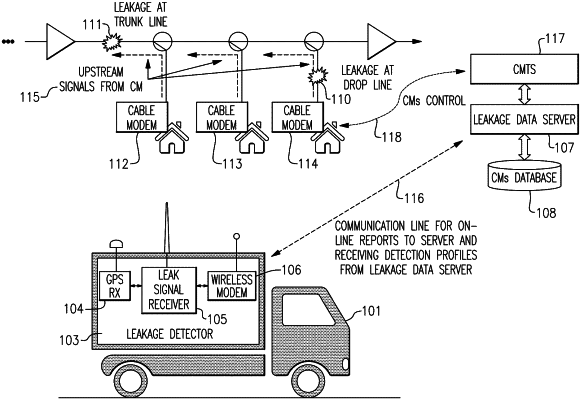| CPC H04L 41/0677 (2013.01) [H04B 7/18506 (2013.01); H04L 1/0071 (2013.01); H04L 12/2801 (2013.01); H04L 43/50 (2013.01)] | 7 Claims |

|
1. A time stamp method of location leakage in an aeronautical band of a high split hybrid-fiber-coaxial (HFC) comprising:
scheduling at a cable modem termination system (CMTS), a generation of a plurality of orthogonal frequency division multiple access (OFDMA) upstream data profile (OUDP) bursts by at least one cable modem (CM) within a node in a fixed sequence, a first OUDP burst in said generation of OUDP bursts synchronous with a global positioning satellite (GPS) half second sync pulse;
measuring a field leakage detector time stamp of a plurality of detected OUDP bursts relative to the GPS half second synch pulse, and sending a report to a leakage data server with a set of current GPS coordinates of a leakage detector, said field leakage detector time stamp, a detected leak level, and a measured OUDP time stamp; and
calculating at said leakage data server, a CM ID based on said measured OUDP time stamp and a duration of said first OUDP burst combined with a first query to said CMTS and a second query to a CM database, to define a physical address of a CM corresponding to said CM ID,
wherein said step of calculating comprises calculating a routing to an integer value of a CM ID=X, based on said measured OUDP time stamp and said OUDP burst duration, and a spatial analysis of adjacent CMs in a sequence with IDs=X−1, X and X+1, and then selecting said CM ID which is located closer to a leakage detector location at about said measured OUDP time stamp.
|